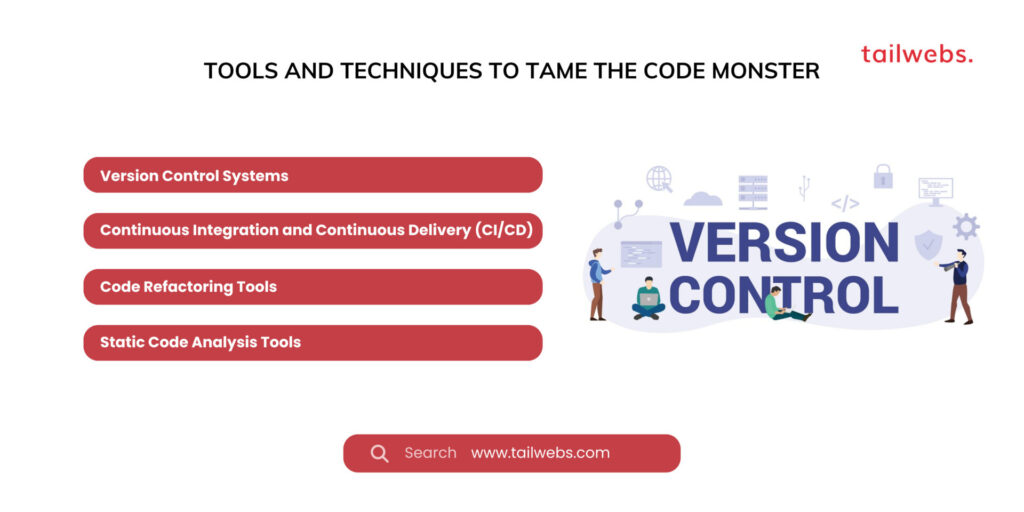Code Crusaders: Conquering the Technical Debt Dragon and Keeping Your Codebase Pristine
The software world is a battlefield, and the fiercest enemy you face isn’t a competitor or a bug, it’s a silent, insidious foe known as technical debt. Accumulated over time, technical debt is the result of shortcuts, quick fixes, and code written under pressure, leaving behind a tangled mess that can drag down your entire codebase. Just like financial debt, ignoring it won’t make it disappear; it will only accrue interest in the form of bugs, slowdowns, and maintenance headaches. So, how do you slay this debt dragon and keep your codebase clean and maintainable? Prepare your IDEs and dust off your code refactoring skills, because we’re embarking on a quest for code clarity!
Why Technical Debt Matters:
Productivity Plummets:
Spaghetti code takes longer to understand, debug, and update, causing developers to spend valuable time untangling the mess instead of building new features.
Morale Dives:
Working with a disorganized codebase can be frustrating and demotivating, leading to decreased developer satisfaction and retention.
Bugs Multiply:
Patchy code is bug-prone, impacting user experience, hindering product quality, and causing costly fixes.
Innovation Stalls:
When fixing existing issues consumes all resources, innovation and new feature development get sidelined, stifling growth and creativity.
Stats Paint a Grim Picture:
84% of developers believe their codebase has some level of technical debt. (JetBrains, 2023)
52% of IT decision-makers say technical debt is a major obstacle to their software development efforts. (Gartner, 2023)
Companies with high technical debt experience 24% lower developer productivity. (Codewars, 2023)
From Code Cauldron to Crystal Clarity: Strategies for Managing Technical Debt
Early Detection & Prioritization:
Regularly code reviews, static code analysis tools, and code smells detection can help identify technical debt early on and prioritize its repayment.
Incremental Refactoring:
Instead of attempting massive rewrites, tackle technical debt in small, manageable chunks over time, gradually improving code quality.
Automated Testing:
Robust automated testing helps ensure refactoring doesn’t introduce regression errors, maintaining stability while improving code design.
Documentation is Key:
Clear and up-to-date documentation helps developers understand unfamiliar codebases and navigate refactored sections efficiently.
Communication and Collaboration:
Keep communication open between developers, architects, and project managers to ensure everyone is aligned on the debt repayment plan.
Invest in Training and Tools:
Equip developers with the skills and tools needed for effective refactoring, including design patterns, best practices, and code analysis platforms.

Tools and Techniques to Tame the Code Monster:
Version Control Systems:
Utilize platforms like Git to track code changes, revert to previous versions if needed, and collaborate on refactoring tasks.
Continuous Integration and Continuous Delivery (CI/CD):
Automate build, test, and deployment processes to catch issues early and ensure refactored code integrates seamlessly.
Code Refactoring Tools:
Leverage tools like ReSharper or Refactoring.Guru to automate routine refactoring tasks and suggest potential improvements.
Static Code Analysis Tools:
Utilize platforms like SonarQube or CodeClimate to identify code smells, potential vulnerabilities, and areas for improvement.

Overcoming the Challenges: When the Code Becomes a Labyrinth
Managing technical debt isn’t always smooth sailing. Some common challenges include:
Lack of Time and Resources:
Prioritizing refactoring amidst deadlines and competing projects can be difficult.
Resistance to Change:
Developers may be reluctant to modify existing code, fearing unintended consequences.
Short-Term Focus:
Management may favor quick fixes over long-term investments in code quality.
Building a Culture of Code Quality: A Team Effort
Conquering technical debt requires a team effort:
Developers:
Take ownership of code quality, learn refactoring techniques, and advocate for proactive debt management.
Management:
Prioritize technical debt repayment, allocate resources for training and tools, and incentivize developers to focus on code quality.
Organization:
Foster a culture of code reviews, continuous improvement, and investment in code maintainability.
By working together, you can transform your codebase from a tangled mess into a shining beacon of clarity and efficiency, paving the way for a future of sustainable development and innovation.
Join the Crusade: Become a Technical Debt Slayer
Share your experiences, tips, and success stories of managing technical debt in your projects. Inspire others to embrace code quality, advocate for refactoring initiatives, and contribute to a healthier software ecosystem.
Together, let’s raise a flag of clean code and declare war on the technical debt dragon! Here are some ways you can join the crusade as a technical debt slayer:
Become a Code Evangelist:
Start a blog or vlog:
Share your knowledge and experiences with technical debt management through blog posts, videos, or even podcasts. Educate and inspire others to prioritize code quality.
Organize technical workshops or meetups:
Share your strategies and tips for tackling technical debt through hands-on workshops or community meetups. Encourage discussions and collaboration on common challenges.
Mentor junior developers:
Guide aspiring coders towards writing clean and maintainable code from the start. Help them understand the importance of quality and the dangers of technical debt.
Lead by Example:
Champion code reviews in your team:
Encourage regular code reviews and actively participate in giving and receiving feedback to identify and address potential technical debt early on.
Advocate for refactoring initiatives:
Propose and champion initiatives to refactor critical areas of the codebase, demonstrating the positive impact of debt repayment.
Share your refactoring successes:
Showcase successful refactoring stories within your team or organization to highlight the benefits of code quality and inspire others to follow suit.
Hold the Line for Code Quality:
Advocate for code quality metrics:
Encourage the use of code quality metrics such as code coverage, complexity, and maintainability to track progress and measure the impact of debt reduction efforts.
Hold code reviews accountable:
Ensure code reviews are taken seriously and that identified issues are addressed promptly to prevent technical debt from accumulating.
Push for continuous improvement:
Foster a culture of continuous improvement within your team, where code quality is seen as an ongoing priority and everyone is accountable for maintaining clean and maintainable code.

By taking action and inspiring others, you can become a champion of code quality and a formidable foe of the technical debt dragon. Remember, a clean and maintainable codebase is not just a technical achievement, it’s the foundation for a thriving software ecosystem where developers can flourish, innovation can thrive, and the future of technology remains bright.





